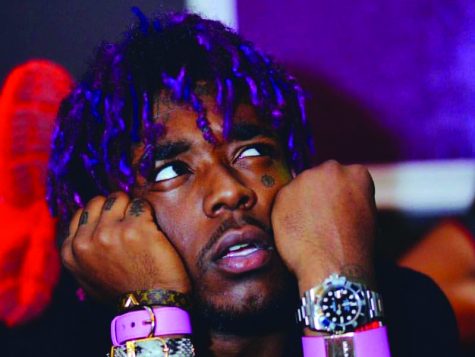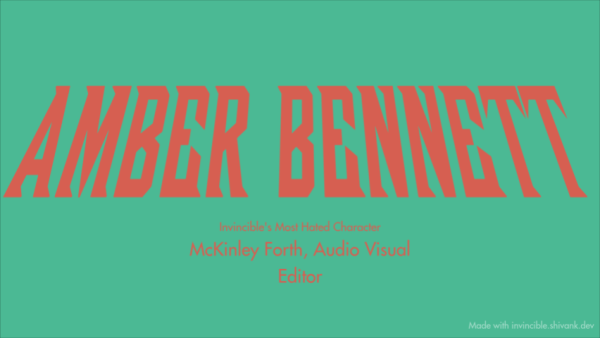Mumble rap takes over Billboard top 40
Rap music has always been a popular and controversial music genres, and hip-hop has spawned some highly influential music and artists. However, rap carries with it controversy — many rappers and songs glorify drugs, gang lifestyles and violence. Many people love rap, and it’s likely that just as many people hate it.
Despite the controversy, it’s possible that no other genre of music can weave together a phrase or a story in the way that rap music can. Some of the greatest hip-hop artists have music and influence that are recognized even by the people who don’t traditionally listen to hip-hop. Think Tupac Shakur, Eminem, Biggie Smalls, Jay-Z, Run D.M.C., Dr. Dre and Nas.
But currently, hip-hop has evolved from the typical instrumental and lyrical stylings of artists such as Eminem and Tupac to mumbled lyrics on top of EDM beats. This style of hip-hop has become known as “mumble rap.”
Mumbling lyrics is nothing new to hip-hop. Drake has utilized such rapping techniques his whole career and EDM beats go as far back in hip hop as the early 1990’s with Dr. Dre and Snoop Dogg. Young Thug first popularized the amalgamation of the two styles back in 2011, and from there, mumble rap has taken over hip-hop.
Many active artists still utilize the traditional instrumental and lyrical style in their music: Wale, Tech N9ne, Vince Staples, Dave East, J. Cole, Kendrick Lamar, Kanye West, etc. But in contrast, many more artists have risen to popularity via mumble-rap: Kodak Black, Travis Scott, Desiigner, Young Thug, Dae Dae, Lil Yachty, Lil Uzi Vert, 21 Savage, Madeintyo, etc. It’s possible that there are many more mumble rappers today than traditional rappers, and that isn’t necessarily a bad thing.
Music goes through evolutions and changes. Electronic/trap music has presented a way to create new sounds and beats in a much easier way than traditional instrumentals. It makes sense that new artists would take advantage of that. But the problem lies in the fact that a good portion of these mumble-rappers aren’t really rappers at all.
Mumble-rappers as a whole don’t offer as much lyrical diversity as traditional rappers, and that’s sugar-coating it a bit. There have been many hit mumble-rap songs that are simply hooks followed by one or two verses that repeat throughout the song. Desiigner’s hit songs “Timmy Turner,” “Panda” and “Zombie Walk,” along with D.R.A.M.’s “Broccoli” are examples. All four songs landed in the Billboard Top 40 at some point in 2016, despite lyrical lackluster. They were well-received because the beats behind the songs were entertaining and increased their replay value.
With so much mumble rap, the beats make the song fun despite the quality of the lyrics. That fact is almost a complete antithesis of the very reason rap exists in the first place. Artists like N.W.A. and Lauryn Hill became great because their music told stories that resonated with listeners. The music behind the song used to be just as important as the lyrics. The music used to set and continue the tone of the song for its entirety. Rappers worked as much storytellers as musicians. Now, one person makes a “dope” beat, someone else writes lazy lyrics to reiterate over and over again, and the song is a hit.
What is frustrating is that it isn’t hard to make a song that is lyrically good with a trap beat. Gucci Mane, Chance the Rapper and Lil Dicky are only a few examples of artists who have used EDM beats but have still managed to make their songs lyrically above standard. Even traditional rappers have occasionally used trap beats and have still made songs that are great lyrically: Vince Staples, Kanye West, Dave East, etc.
With the wave of mumble rappers who have emerged in the last five years, it is doubtful that mumble rap and its style are just a fad, this is probably the new hip-hop standard. But with more and more artists and songs lacking the storytelling aspect that defined rap music for so long, the future of traditional hip-hop looks to be in jeopardy.







serenity • Dec 10, 2019 at 2:36 PM
OK i going to speak my mind
who ever made this site is VERY VERY VERY stupid and dumb probably never went to school or never listen to music in their whole live
mumble rap is not taken over and only lil nas x and other VERY bad rappers are and ll dicky is not a mumble rapper he is a conversation SO GET YOUR FACTS STRAIGHT
tech n9ne is not a mumble rapper so get your fact straight before you post anything fake
Full of Sighs • Feb 15, 2017 at 5:34 PM
Dear God, another person critiquing “mumble rap.” It was obvious that the author is trying to appear knowledgeable about something he has a very tentative grasp on to begin with. Just because you cannot relate and therefore cannot comprehend the messages and the themes of particular artists, or you can’t understand their style of delivery, does not make it subpar. I also get the feeling that the author either isn’t aware or isn’t concerned with artists currently not on the radio every day. Maybe when you start to diversify the artists that you listen to instead of listening to the same Billboard 100 crap you would know something about the genre you claim to know so much about. Also, the 11th word is a typo. Way to proofread.